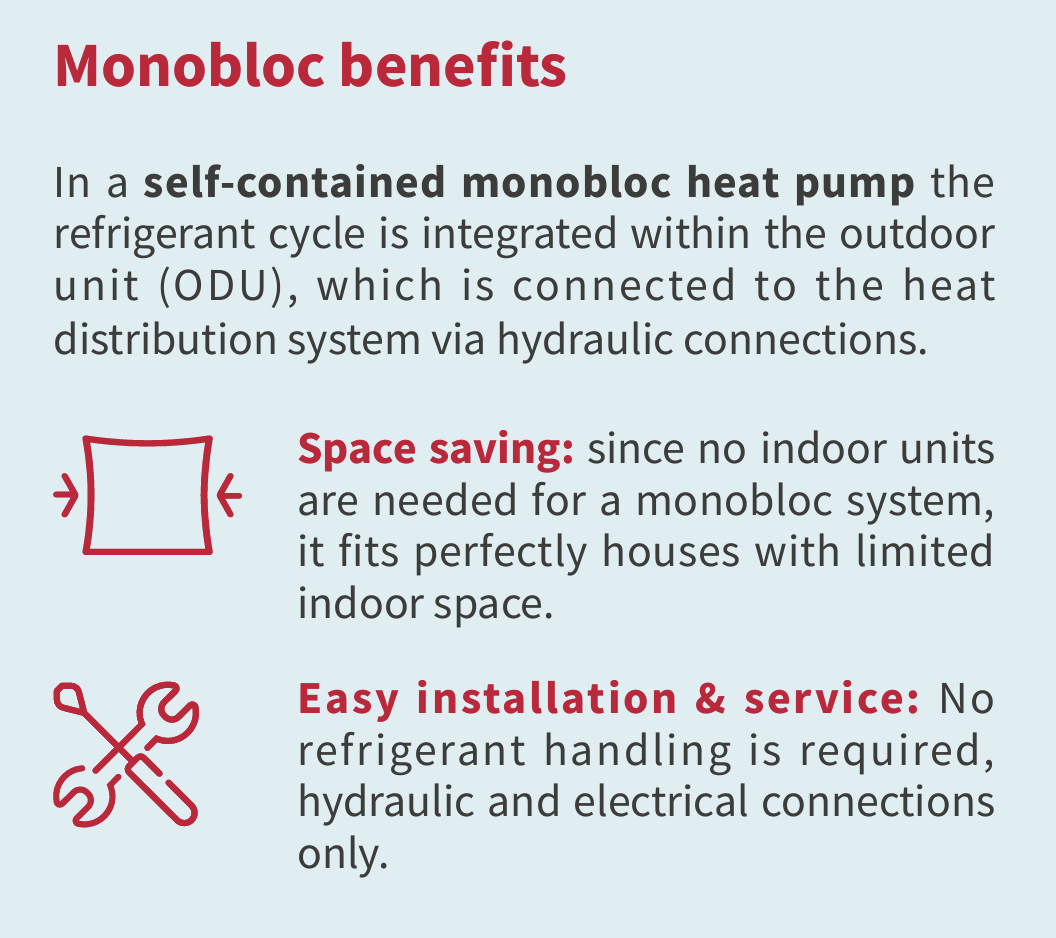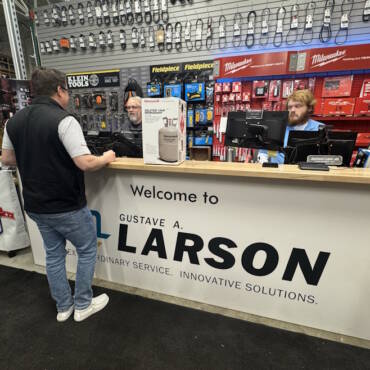The residential heating and cooling industry is facing unprecedented regulatory changes from both federal and state mandates. Government leaders from 24 states have instituted ambitious residential heat pump transition plans with some considering broad natural gas limitations. Nationally, the American Innovation and Manufacturing (AIM) Act continues to drive down the production and use of hydrofluorocarbons (HFCs) to reduce carbon emissions. And, some estimate that the country’s commitment to the Kigali Amendment standards may require an even more stringent upheaval of HVAC refrigerant usage. Combined with shifts in consumer sentiment and unstable fuel costs, many contractors are seeking future-proof solutions that can deliver reliable home comfort while meeting stringent regulations.
In recent years, residential air-to-water heat pumps have emerged as a transformative solution to lower carbon emissions, enhance energy efficiency, and reduce utility bills. These innovative systems use a closed-loop refrigerant cycle to safely transfer heat from the ambient air to a water circuit that powers decarbonized and efficient heating, cooling, and domestic hot water. Air-to-water heat pumps have been used throughout Europe for decades but have not yet been widely available in the North American market. Therefore, many decision-makers in North America are not yet familiar with this technology.
As air-to-water heat pump technology becomes more accessible, it’s important for contractors to understand how the unique technologies of these systems can benefit homeowners, enhance refrigerant safety, and simplify installation processes while meeting environmental and energy regulations.
Understanding Emerging Air-to-Water Heat Pump Technologies
Air-to-water heat pumps use high-efficiency, vapor injection compressor technology to mimic the operation of a natural gas boiler for heating operations. Instead of consuming fuel, air-to-water heat pumps pull the energy from ambient air and transfer it to the closed water loop located inside of the living space. In addition to heating, air-to-water heat pumps can also be utilized for cooling and domestic hot water generation.
More recent innovations have taken the technology even further, enabling advanced air-to-water heat pumps to achieve and maintain high heating capacities even within low ambient conditions. For example, the airH2O Yutaki M Air-to-Water Heat Pump by Hitachi, utilizes an enhanced vapor injection twin-rotary compressor design that enables a sustainable compression ratio even at low ambient temperatures to generate more stable heating capacities during cold winter days. As a result, the Yutaki heat pump can achieve indoor heating temperatures as high as 140° F, and the system can operate down to -13° F. Within most applications, this means a backup heat source is not required. Additionally, a built-in smart defrost timing system rapidly de-ices and auto-dries coils to ensure a more consistent, high-capacity heating without interruption while enhancing energy efficiency.
Equipment Installation Considerations
Air-to-water heat pumps are commonly engineered around a self-contained outdoor unit commonly referred to as a monobloc design. Within this layout, there are more living space applications available due to the design freedom of hydronics. For example, the same monobloc outdoor unit can be utilized as part of a floor heating system, for fan coils or wall radiators.
At the core of the air-to-water heat pump is the terminal board. Some designs can feature as many as 40 connections with inputs/outputs and sensors that can be configured in different ways to further enhance system flexibility. For instance, in addition to home comfort, the heat pumps can be used to heat a home’s swimming pool and provide domestic hot water. Configurations can be customized during installation or over time as homeowners’ needs change. Online simulation tools provide a testing ground to determine application requirements and calculate performance.
This “plug and play” format simplifies installation requiring only hydraulic and electrical connections. And because the refrigerant loop is sealed, no refrigerant handling is required to further streamline the process.
Advantages of a Sealed Refrigerant Loop
One of the more important advantages to both contractors and homeowners is the air-to-water heat pump’s sealed refrigerant loop. This innovative design enables the full refrigerant circuit to remain outside of the home within factory-sealed piping. Plus, it eliminates the risk of potential refrigerant leaks inside the home which means a refrigerant leak detection system is not required.
The closed-loop, monobloc design enables air-to-water heat pumps to operate with low-global warming potential (GWP) refrigerants such as R-32. The sealed, outdoor piping also means the systems are compatible with possible future refrigerant options, including R-290 (propane), making it a safer and environmentally forward option now and in the future.
MONOBLOC BENEFITS: With its self-contained nature, monobloc not only saves space, but is also easy to install and service. (Courtesy of Johnson Controls-Hitachi)
Making the Case for Air-to-Water Heat Pumps
As the residential HVAC landscape continues to evolve, systems designed to adapt to these shifting requirements are more important than ever before. Air-to-water heat pumps provide a solution that meets current environmental regulations while prioritizing the safety of homeowners and contractors. Systems engineered around a self-contained monobloc design, save space while offering flexibility that can adapt alongside homeowners’ needs. And, forward-thinking outdoor refrigerant circuits enable air-to-water heat pumps to remain compatible with refrigerant regulations as GWP requirements evolve. Combined with their cold-climate performance, air-to-water heat pumps are an ideal solution for contractors tasked with providing a more reliable and efficient home comfort while meeting stringent regulations.
Whether you require installation, repair, or maintenance, our technicians will assist you with top-quality service at any time of the day or night. Take comfort in knowing your indoor air quality is the best it can be with MOE heating & cooling services Ontario's solution for heating, air conditioning, and ventilation that’s cooler than the rest.
Contact us to schedule a visit. Our qualified team of technicians, are always ready to help you and guide you for heating and cooling issues. Weather you want to replace an old furnace or install a brand new air conditioner, we are here to help you. Our main office is at Kitchener but we can service most of Ontario's cities
Source link




Add Comment